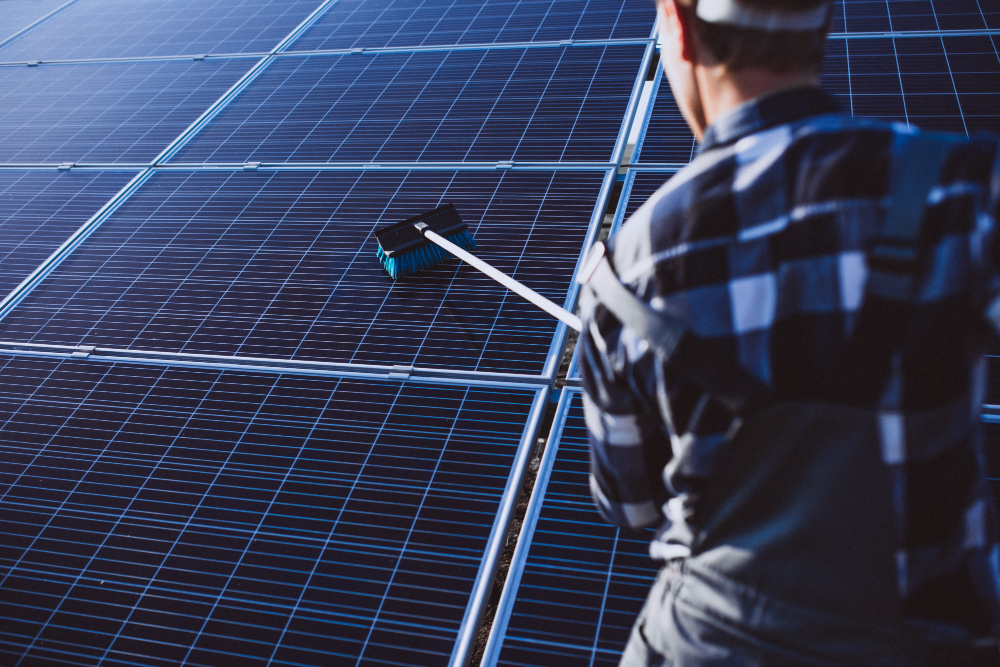
Introduction: Why Go Solar Now?
If you’re tired of skyrocketing electricity bills and frequent power cuts, solar energy might be your solution. With the government’s continued push for sustainable energy through subsidies and incentives, solar system installation costs have become more affordable than ever in India.
In this guide, we’ll break down the cost of installing a solar system, cover key components that affect pricing, and show you how to calculate long-term savings.
What Influences the Solar System Installation Cost?
Here’s what makes up the final bill:
1. Type of Solar Panels
Monocrystalline panels have a higher efficiency but also come at a higher cost.
Polycrystalline panels are lower in cost but slightly less efficient than monocrystalline panels.
Bifacial panels produce electricity from both sides, albeit at a premium price.
2. System Capacity
The bigger your home’s energy requirement, the larger the system size:
1kW system: For small homes or basic backup.
3-5 kW: Ideal for average Indian households.
10 kW+: Suitable for large homes with high appliance usage.
3. Roof Type & Mounting Structure
Flat rooftops require more robust mounting.
Inclined rooftops may reduce structural costs.
Elevated structures for shadow-free installation may add extra charges.
4. On-Grid vs Off-Grid
On-Grid Systems: Cheaper, net metering enabled.
Off-Grid Systems: These systems include batteries and have higher upfront costs.
5. Component Quality
High-end solar inverters, AC/DC combiner boxes, and cabling can increase durability but add to the price.
Typical Solar System installation cost in India (2025)
| System Size | Estimated Cost (Before Subsidy) |
|---|---|
| 1 kW | ₹75,000–₹100,000 |
| 3 kW | ₹180,000–₹250,000 |
| 5 kW | ₹275,000–₹350,000 |
| 10 kW | ₹550,000–₹680,000 |
Note: Prices vary by location, panel brand, inverter type, and installation complexity.
Solar Subsidy Schemes in India (2025)
The PM Surya Ghar Yojana offers subsidies for rooftop installations:
₹18,000/kW for first 3 kW
₹9,000/kW for remaining capacity up to 10 kW
Applies to on-grid systems with net metering
Must use ALMM-approved panels and empaneled vendors
Example:
For a 3kW system, the subsidy can be ₹54,000. This drastically reduces the installation cost.
ROI: Investment vs Savings
Let’s take a 5kW system:
Cost (post-subsidy): ₹225,000
Annual Savings: ₹40,000–₹50,000
Break-even Point: 4–5 years
Lifespan: 25 years
That’s ₹10–12 lakhs in total savings over the system’s lifespan!
Tips to Reduce Installation Cost
Compare Multiple Quotes: Get at least 3 estimates from certified vendors.
Choose Efficient Panels: Higher upfront cost but better long-term savings.
Check for Local Incentives: Some states offer additional rebates.
FAQs (Frequently Asked Questions)
1. What is the average cost of a 5kW solar system in India?
The average cost of a 5kW solar system in India typically ranges from ₹2.75 lakh to ₹3.50 lakh before subsidies.
2. How much money can I save each month with solar?
You can save ₹3,000–₹5,000 monthly depending on your usage.
3. Is a subsidy available for commercial installations?
Mostly residential. Commercial installations may benefit from depreciation and other tax advantages.
4. Do I need to pay the full amount upfront?
Many vendors offer financing, including EMIs or solar leasing.
5. Which panel type is best?
Monocrystalline panels are ideal for high-efficiency requirements, while polycrystalline panels are more cost-effective.
6. Are there hidden costs in installation?
Watch out for extra charges like net metering, elevated structure, and cable length.
7. Is it mandatory to get net metering?
Although it’s not mandatory, we recommend net metering to achieve higher savings in on-grid systems.
8. How long does installation take?
Depending on the complexity of the system, the installation process typically takes 3–5 days.
9. Can I run ACs and geysers on solar?
Certainly, please ensure that your system is appropriately sized, with a recommendation of 5 kW or more.
10. What steps should I take to select a reliable vendor?
Please ensure that the vendor is affiliated with MNRE or your local DISCOM.
Final Thoughts: Is a solar system installation cost worth it?
Absolutely—going solar in 2025 is one of the smartest financial and environmental decisions you can make. With falling panel prices, rising grid tariffs, and generous government subsidies like the PM Surya Ghar Yojana, the solar system installation cost is now more affordable than ever for Indian homeowners.
Whether you’re looking to reduce monthly electricity bills, achieve energy independence, or simply contribute to a greener planet, a well-planned solar setup can deliver value for decades.
✅ Do your research
✅ Choose an empaneled and experienced vendor
✅ Size your system right based on usage
✅ Tap into available subsidies
✅ And enjoy clean, low-cost power for the next 25+ years
The sun is shining—and it’s ready to power your future. Will you harness it?
Pages You Should Read
